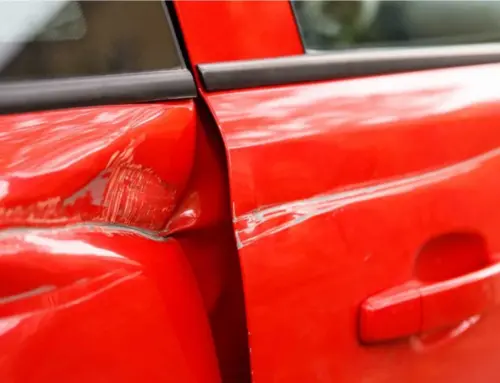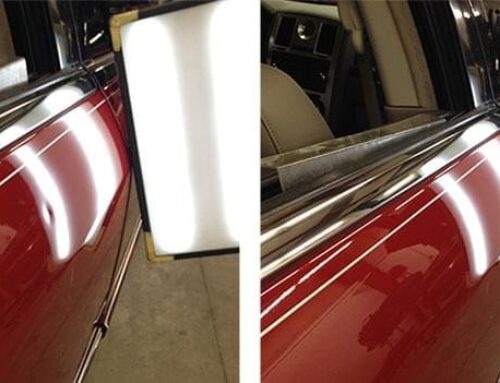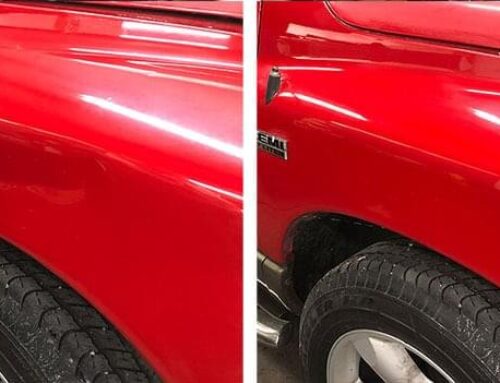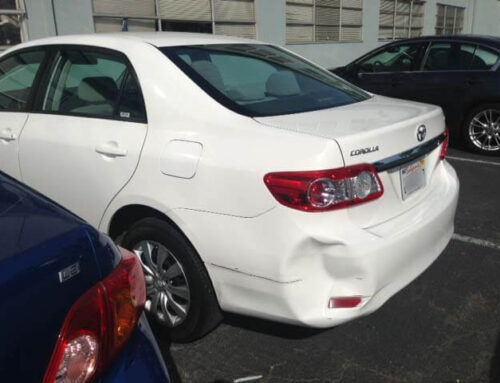Hailstorms are nature’s way of reminding us who’s really in charge. One minute you’re admiring your flawless ride, and the next—bam!—you’re staring at a polka-dotted hood courtesy of golf ball-sized hailstones. It’s a car owner’s nightmare, but it’s not the horror story it used to be. Thanks to remarkable advances in hail dent removal, what once required costly bodywork and paint jobs can now be handled with speed, precision, and barely a trace.
Hail dent removal—how the process has changed, the technology making it better, and why the term seamless restoration isn’t just marketing fluff anymore. If you’re still picturing a hammer, some putty, and a paint booth, buckle up—we’re stepping into the new age of dent repair.
What is the Process Behind Hail Dent Removal Today?
Gone are the days when hail damage meant sanding, filling, and repainting entire panels. Today’s dent repair process is smarter, faster, and far less invasive. The industry has largely embraced a method called Paintless Dent Repair (PDR)—and it’s revolutionized how professionals restore hail-damaged vehicles.
Here’s how modern hail dent removal typically works:
- Inspection & Assessment: First, a technician carefully examines the vehicle using special lights and tools to identify every dent—even those invisible in normal lighting. They’ll assess the severity, size, and accessibility of the dents to determine if PDR is the right approach.
- Accessing the Dent: The technician may need to remove interior panels, taillights, or other components to get behind the dent. The goal is to reach the underside of the damaged metal.
- Precision Massage Technique: Using a set of custom-shaped metal rods and tools, the technician gently massages the dent out from behind the panel. It’s slow, deliberate work—like sculpting metal.
- Finishing Touches: Once the dent is removed, the area is polished and inspected to ensure a flawless finish. The original paint remains intact, and the panel looks as good as new.
This method is widely favored for hail damage because of its ability to restore the vehicle without altering the factory paint or using fillers, sanding, or painting.
How Has Technology Improved Hail Dent Repair Techniques?
Technology has not only improved the results of hail dent repair but also streamlined the entire experience for both technicians and car owners. What was once a manual, labor-intensive craft now benefits from advanced tools and digital precision.
Game-changing technological improvements include:
- LED Lighting Systems: These high-contrast lights help technicians clearly see the depth and edges of even the smallest dents, allowing for highly accurate and consistent repairs.
- Digital Mapping Software: Insurance companies and repair shops often use software to create digital damage assessments. This ensures accurate documentation, quicker insurance approvals, and clear communication between all parties.
- Magnetic Induction Tools: These tools use controlled heat to gently expand and contract the metal surface, helping to lift shallow dents without any direct contact—perfect for sensitive or hard-to-reach areas.
- Glue Pull Systems: When access behind the panel is limited, glue tabs can be attached to the dent’s exterior, then gently pulled with slide hammers or lifters. These systems have become more advanced and less damaging over time.
- PDR Training Simulators: Technicians now train using virtual or mechanical simulators that mimic real-life dents, giving them valuable hands-on experience without risking damage to customer vehicles.
Thanks to these tools and innovations, hail damage that once took days to repair can often be resolved in just a few hours—with jaw-dropping precision.
What Makes Seamless Hail Dent Restoration Different from Traditional Methods?
Seamless hail dent restoration, especially through Paintless Dent Repair (PDR), offers a modern solution that outperforms traditional methods in almost every way.
While traditional dent repair involves sanding, fillers, and repainting—often resulting in visible mismatches or diminished resale value—seamless restoration focuses on preserving your vehicle’s original appearance without invasive procedures. Here’s how seamless hail dent restoration stands apart:
- No Paint Required – PDR restores the metal from behind the panel, keeping your factory paint intact and eliminating color-matching issues.
- No Fillers or Sanding – Traditional methods require body filler and sanding, which can wear down the integrity of the panel. PDR avoids this completely.
- Eco-Friendly Process – With no chemicals, paint, or waste involved, seamless restoration is significantly better for the environment.
- Faster Turnaround Time – PDR often takes just a few hours, while traditional methods may take days due to drying, painting, and curing times.
- Cost-Effective – With fewer materials and labor involved, PDR is generally more affordable for hail dent removal.
- Maintains Vehicle Value – Since the car remains in its original condition, seamless repairs help protect long-term resale and trade-in value.
Seamless restoration is about quality, efficiency, and preservation—giving you results that look untouched by hail or time.
Can Hail Dent Removal Be Done Without Affecting the Car’s Paint?
Yes—and this is where modern dent repair really shines. With Paintless Dent Repair, the car’s original paint remains untouched, which is one of the biggest reasons it’s become the go-to method for hail damage. But how is that possible?
Here’s why PDR preserves your paint:
- Flexibility of Modern Paints
Factory car paints are now more flexible and durable than ever, allowing them to withstand the gentle bending and reshaping involved in PDR without cracking or peeling. - No Abrasive Tools
Unlike traditional repair methods, PDR doesn’t involve sanding or grinding, which can compromise the paint surface. - No Repainting Required
Since the metal is reshaped from behind, there’s no need for color matching, repainting, or clear coat blending—which also means no chance of mismatched paint jobs or overspray. - Gentle Pressure Techniques
PDR tools are designed to apply highly controlled pressure. The dents are massaged out gradually, which avoids stressing the paint layer.
However, it’s important to note that PDR works best when the paint hasn’t already been chipped or cracked. If the hail impact has broken through the paint, traditional methods may be necessary—but for most hail dents, especially minor to moderate ones, PDR works like magic.
Ready for Seamless Restoration? Let Piedmont Dent Repair Handle the Hail
At Piedmont Dent Repair, we specialize in high-quality hail dent removal using cutting-edge Paintless Dent Repair techniques. Our skilled technicians use precision tools and years of experience to restore your vehicle to its original look—without affecting the paint or requiring invasive bodywork.
We believe in quick, clean, and seamless solutions that protect your vehicle’s value and your peace of mind. Whether your car took a light peppering or a full-on hailstorm beating, we’ve got you covered.
Contact us today for a fast estimate and discover how easy hail repair can be when you’ve got the right team on your side.





